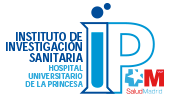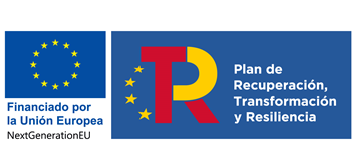Animal models of inflammatory diseases and tissue remodelling
Group Information
Obesity and insulin resistance (IR) are fundamental health issues that have reached epidemic proportions around the world. The inflammatory components of these diseases are being shown to be key factors both for their aetiology and their development. Therefore, a fundamental focus of research to gain a deep understanding of the mechanical bases of these pathologies is the cell signalling pathways that serve as nodal points interconnecting pathological aggressions and metabolic signals with inflammatory pathways.
In this context, the signalling centre formed by G protein-coupled receptors kinase 2 (GRK2) emerges as a clear control point in the networks of metabolic, stress and inflammatory pathways that control the initiation and progression of these diseases. Given the lack of selective and potent inhibitors for this kinase, our group has focused on proof-of-concept studies in models with genetically modified animals.
The group pursues three main lines of research in this area.
- Preliminary evidence suggests that the specific effects of GRK2 on macrophages and other inflammatory cells could contribute to insulin sensitivity control, increased adipose tissue and obesity in human samples and in animal models of these diseases. We will study the influence of changes in GRK2 expression, specifically in macrophages infiltrating white adipose tissue and other insulin-sensitive organs, during the increase in fat mass in the development of weight gain associated with obesity, adiposity and IR.
- We will work on GRK2 validation as a new therapeutic target in the development of obesity and/or IR, by using a model with mice which allows deletion of this protein to be induced by tamoxifen once the pathology has been established. We will research whether GRK2 deletion not only prevents, but also reverses weight gain and IR, and we will characterise the main tissues and cell functions through which GRK2 may have these effects, as well as the molecular mechanisms involved.
- We will analyse the importance of the GRK2 signalling node and the changes in its levels or activity in the development of non-alcoholic steatohepatitis (NASH) and its evolution into more complex pathologies such as non-alcoholic fatty liver disease (NAFLD), which involve liver inflammation, dysfunction and fibrosis. We will use models of these diseases in mice (including diets high in fats and models of liver damage) to determine the influence and importance of the GRK2 node in the genesis and progression of these pathologies, paying particular attention to the inflammatory component (infiltrates, M1/M2 polarisation, secretome, etc.).
Team members
|
Cristina Murga Montesinos Universidad Autónoma de Madrid-Molecular Biology Institute |
Other team members:
|
Murga Montesinos, Cristina. Research into tissue-specific interactome in the GRK2 node involved in insulin resistance and obesity: pathophysiological repercussions. Fundación Ramón Areces. 2015-2018.
Mayor Menéndez, Federico; Murga Montesinos, Cristina. Physiological integration and pathological implications of functional GRK2 interactions in different cell types and contexts. SAF2014-55511-R. MINECO. 2015-2017.
Mayor Menéndez, Federico; Penela Márquez, Petronila; Murga Montesinos, Cristina. ONCORTNET: Role of G Protein-coupled receptor Kinases (GRKs) in CXCR4 and CXCR7 signalling and modulation. 641833. Marie Sklodowska-Curie Innovative Training Networks (ITN-ETN). European Commission. 2015-2018.
Avendaño MS, Lucas E, Jurado-Pueyo M, Martínez-Revelles S, Vila-Bedmar R, Mayor F, Salaices M, Briones AM, Murga C. Increased Nitric Oxide Bioavailability in Adult GRK2 Hemizygous Mice Protects Against Angiotensin II-Induced Hypertension. Hypertension 2014. 63: 369-0. FI: 6.480(Q1). PMID: 24191280. DOI: 10.1161/HYPERTENSIONAHA.113.01991.
Willemen HL, Campos PM, Lucas E, Morreale A, Gil-Redondo R, Agut J, González FV, Ramos P, Heijnen C, Mayor F, Kavelaars A, Murga C. A novel p38 MAPK docking-groove-targeted compound is a potent inhibitor of inflammatory hyperalgesia. Biochem. J. 2014. 459: 427-439. FI: 4.396(Q1). PMID: 24517375. DOI: 10.1042/BJ20130172.
Lucas E, Jurado-Pueyo M, Fortuño MA, Fernández-Veledo S, Vila-Bedmar R, Jiménez-Borreguero LJ, Lazcano JJ, Gao E, Gómez-Ambrosi J, Frühbeck G, Koch WJ, Díez J, Mayor F, Murga C. Downregulation of G protein-coupled receptor kinase 2 levels enhances cardiac insulin sensitivity and switches on cardioprotective gene expression patterns. Biochem. Biophys. Acta-Mol. Basis Dis. 2014. 1842: 2448-2456. FI: 4.882(Q1). PMID: 25239306. DOI: 10.1016/j.bbadis.2014.09.004.
Garcia-Guerra L, Vila-Bedmar R, Carrasco-Rando M, Cruces-Sande M, Martín M, Ruiz-Gómez A, Ruiz-Gómez M, Lorenzo M, Fernández-Veledo S, Mayor F, Murga C, Nieto-Vázquez I. Skeletal muscle myogenesis is regulated by G protein-coupled receptor kinase 2. J. Mol. Cell Biol. 2014. 6: 299-311. FI: 6.771(Q1). PMID: 24927997. DOI: 10.1093/jmcb/mju025.
Vila-Bedmar R, Garcia-Guerra L, Nieto-Vazquez I, Mayor F, Lorenzo M, Murga C, Fernández-Veledo S. GRK2 contribution to the regulation of energy expenditure and brown fat function. Faseb J. 2012. 26: 3503-3514. FI: 5.704(Q1). PMID: 22516294. DOI: 10.1096/fj.11-202267.


 Group leader:
Group leader:






